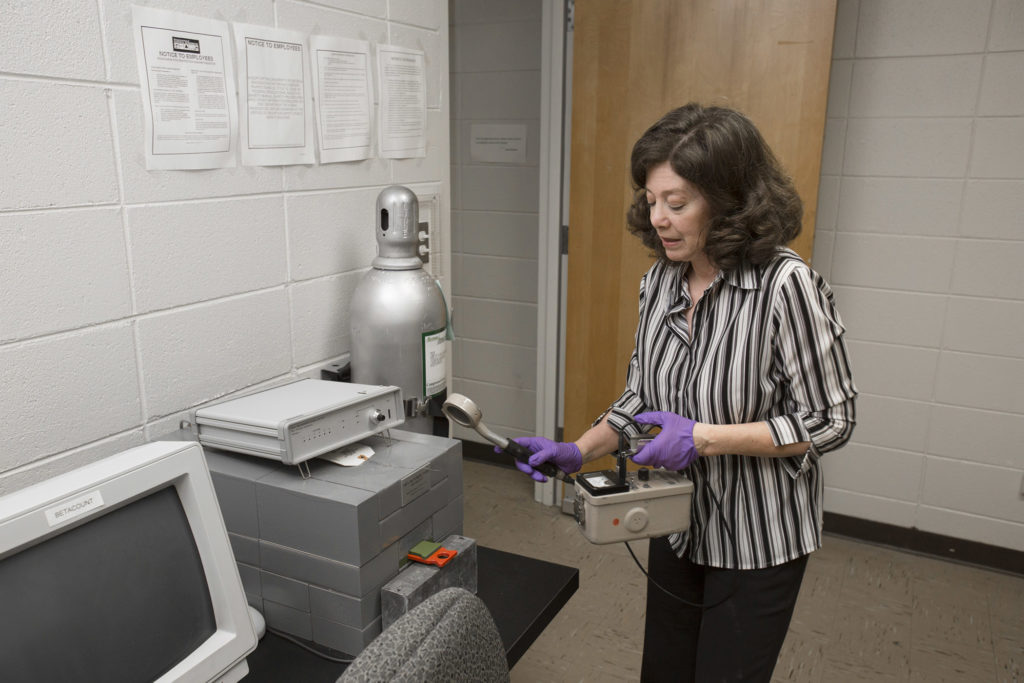As Lauren Palmer was researching the fallout of the Fukushima nuclear disaster in Japan, an article about another Pacific island caught her eye. The article was about then-Secretary of State Hillary Clinton’s remarks on Amelia Earhart’s disappearance and the search efforts.
Clinton spoke about an expedition researchers from The International Group for Historic Aircraft Recovery, or TIGHAR, were planning off the island nation of Kiribati in the South Pacific Ocean. That article sparked Palmer’s interests, and she began to look more into Earhart and TIGHAR.
“I got sidetracked from Fukushima and started following Amelia Earhart’s story,” said Palmer, a radiation safety specialist in the Environmental Safety Division. “The whole thing is just fascinating to me.”
As a child, Palmer heard the story of Earhart’s 1937 disappearance during an attempt to circumnavigate the globe, but she always had assumed the plane had crashed in the ocean. However, after reading some of TIGHAR’s work and other research, Palmer said the theory that Earhart and Fred Noonan made an emergency landing on the beach of one of the islands, uninhabited Nikumaroro—known at that time as Gardner Island—really intrigued her.
TIGHAR has plans to search the ocean off Nikumaroro, one of the Phoenix Islands and part of Kiribati, for wreckage from mid-September to mid-October. The group will be using two submersibles from the University of Hawaii to search as well as to collect data on the effects of climate change.
Palmer said she’s been looking into ways UGA might be able to help with the expedition. She said the Office of the Vice President for Research gave her information about some off-site grants that might be applicable.
“I’m interested in Amelia and in the reefs and ocean area there,” Palmer said.
Since that area may be down-wind and down-current of the Japanese disaster and the Marshall Islands, the site of nuclear weapons testing, Palmer’s field of radioactive materials relates with the expedition.
As a radiation safety specialist, Palmer inspects on-campus laboratories that use radioactive materials. She ensures work with the materials is done properly and that all personnel have the proper training. Palmer also performs surveys to check for any contamination.
Palmer said that going into the labs and seeing the world-class research being performed at UGA is the best part of the job.
Palmer also visits each lab on campus at least once a year and averages one visit to a lab each day. She is responsible for making sure proper signs and warnings are posted and that individuals are wearing the correct protective clothing when they work near radioactive materials.
While she hasn’t been able to go on any TIGHAR trips, Palmer said she would love to go on one someday, but until then she will continue following the search for Earhart closely.
“It’s just interesting to me on several levels,” she said. “It was a great, great tragedy, and we are so close to figuring out what happened.”
